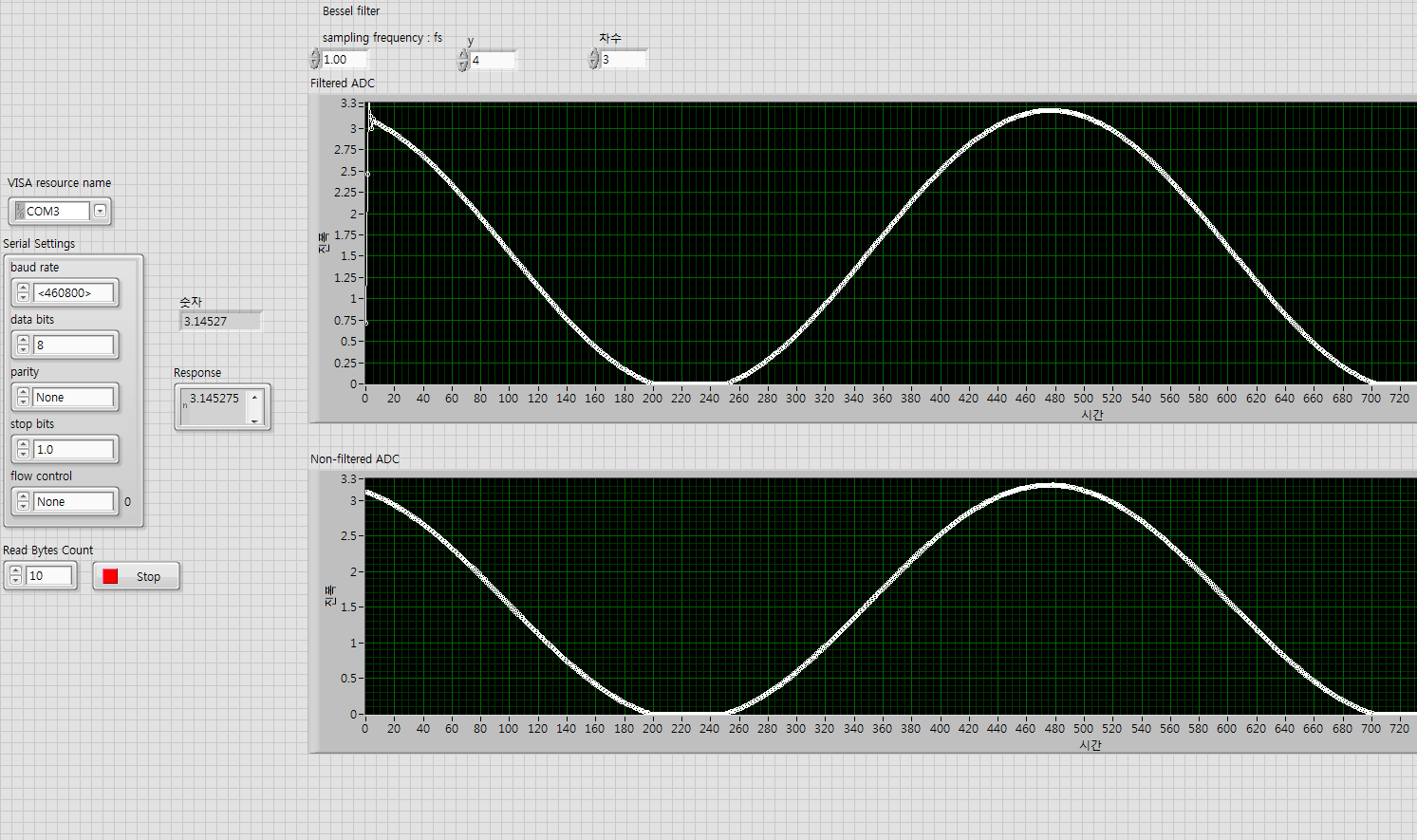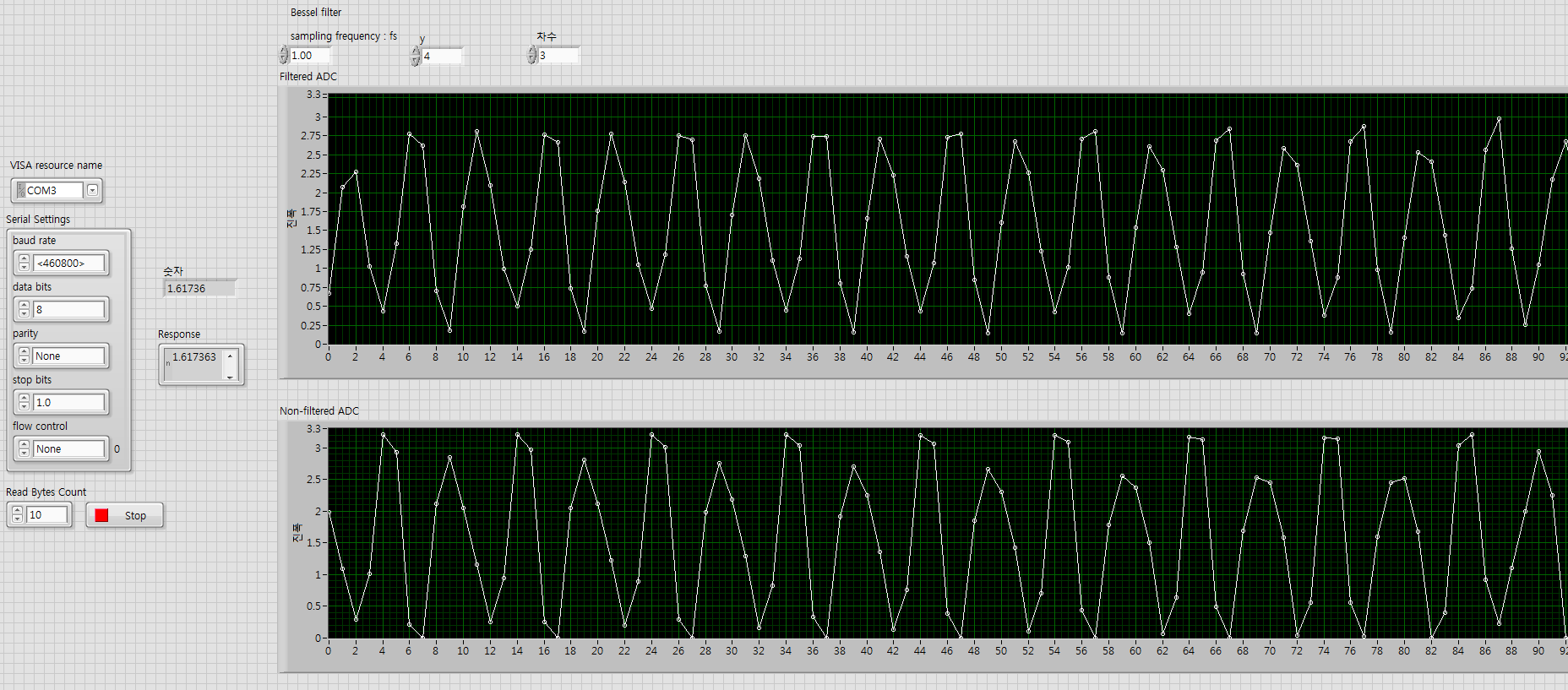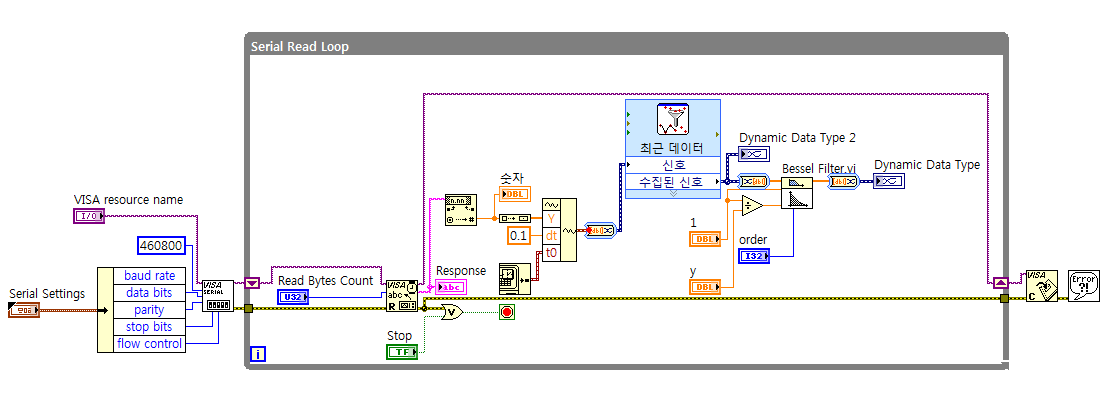Important changes to forums and questions
All forums and questions are now archived. To start a new conversation or read the latest updates go to forums.mbed.com.
9 years ago.
LPC1768 Sampling rate and LabVIEW System
Hello, I want to make a DAQ board using a LPC1768.
In Labview system, I made DAQ program for logging data.
LPC1768's datasheet said 200KHz Maximum sampling rate in 13MHz.
but I couldn't get data High frequency samples.
I used diversity code in ARM Forum. but I can't solve this problem.
Please see this figures.
 Fig 1. is 10Hz Sine wave from Function generator. It is good.
Fig 1. is 10Hz Sine wave from Function generator. It is good.
 Fig 2 is 100Hz Sine wave, I get good data.
Fig 2 is 100Hz Sine wave, I get good data.
 Fig 3 is 1KHz Sine wave, but it was distorted! you can see this picture, samples of a period is 7-8 points. when Nyquist's theory, general signal sampling ratex2, but sine wave need almost x10.
Fig 3 is 1KHz Sine wave, but it was distorted! you can see this picture, samples of a period is 7-8 points. when Nyquist's theory, general signal sampling ratex2, but sine wave need almost x10.
Why LPC1768 can't make sample 200KHz?
I used library FastAnalogIn : http://developer.mbed.org/users/Sissors/code/FastAnalogIn/ ADC_Test : http://developer.mbed.org/users/simonb/code/ADC_test/ ADC_fast_sample_and_send : http://developer.mbed.org/users/gno/code/ADC_fast_sample_and_send/
But I can't get accuracy data and fast samples..... This result that I set baud rate 921600 or 460800. but i don't think main problem is not baud rate. How can i change this source?
I just want to the fastest ADC single channel, don't need signal filter(because labview will filter),
Here is my code.
- include <FastAnalogIn.h>
- include <mbed.h>
AnalogIn ain0(p20);
Serial pc(USBTX,USBRX); Tx, Rx Pin
int main()
{
pc.baud(460800);
while(1)
{
pc.printf("%f\n",ain0.read()*3.3);
}
}

Last Fig is my labview(2014) code.
I hope to get some tip.
Jeongdae (iNES)
1 Answer
9 years ago.
You might try buffering some samples before sending them to the pc:
#include <FastAnalogIn.h>
#include <mbed.h>
AnalogIn ain0(p20);
Serial pc(USBTX,USBRX);
// define the maximum number of samples
#define BUFFERSIZE 256
int main()
{
pc.baud(460800);
float buffer[BUFFERSIZE];
int t=0;
while(1)
{
// get samples in buffer
for (t=0; t<BUFFERSIZE; t++)
{
buffer[t]=ain0.read();
}
// now send them to the PC
for (t=0; t<BUFFERSIZE; t++)
{
pc.printf("%f\n",buffer[t]*3.3);
}
}
}